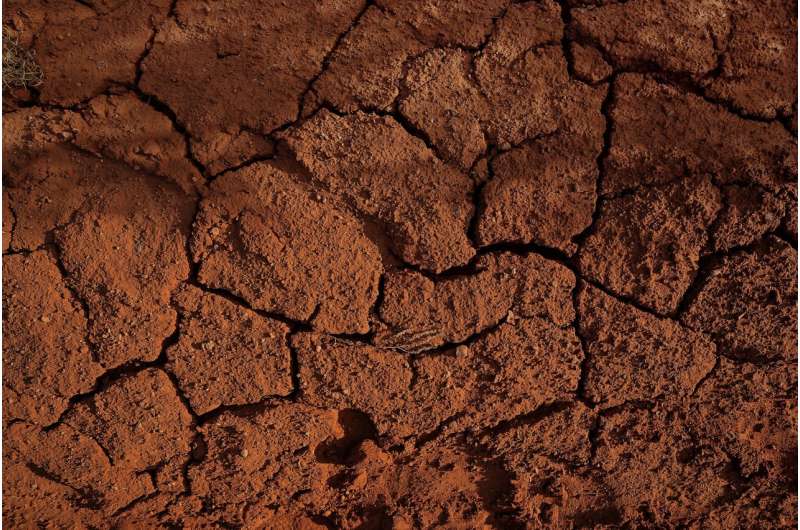Warmer soil stores less carbon: study

Global warming will cause the world's soil to release carbon, new research shows.
Scientists used data on more than 9,000 soil samples from around the world, and found that carbon storage "declines strongly" as average temperatures increase.
This is an example of a "positive feedback", where global warming causes more carbon to be released into the atmosphere, further accelerating climate change.
Importantly, the amount of carbon that could be released depends on the soil type, with coarse-textured (low-clay) soils losing three times as much carbon as fine-textured (clay-rich) soils.
The researchers, from the University of Exeter and Stockholm University, say their findings help to identify vulnerable carbon stocks and provide an opportunity to improve Earth System Models (ESMs) that simulate future climate change.
"Because there is more carbon stored in soils than there is in the atmosphere and all the trees on the planet combined, releasing even a small percentage could have a significant impact on our climate," said Professor Iain Hartley of Exeter's College of Life and Environmental Sciences.
"Our analysis identified the carbon stores in coarse-textured soils at high-latitudes (far from the Equator) as likely to be the most vulnerable to climate change.
"Such stores, therefore, may require particular attention given the high rates of warming taking place in cooler regions.
"In contrast, we found carbon stores in fine-textured soils in tropical areas to be less vulnerable to climate warming."
The data on the 9,300 soil profiles came from the World Soil Information database, with the study focusing on the top 50cm of soil.
By comparing carbon storage in places with different average temperatures, the researchers estimated the likely impact of global warming.
For every 10°C of increase in temperature, average carbon storage (across all soils) fell by more than 25%.
"Even bleak forecasts do not anticipate this level of warming, but we used this scale to give us confidence that the effects we observed were caused by temperature rather than other variables," Professor Hartley said.
"Our results make it clear that, as temperatures rise, more and more carbon is release from soil.
"It's important to note that our study did not examine the timescales involved, and further research is needed to investigate how much carbon could be released this century."
The researchers found that their results could not be represented by an established ESM.
"This suggests that there is an opportunity to use the patterns we have observed to improve how models represent soils, and further reduce uncertainty in their projections," Professor Hartley said.
The differences in carbon storage based on soil texture occur because finer soils provide more mineral surface area for carbon-based organic material to bond to, reducing the ability of microbes to access and decompose it.
The paper, published in the journal Nature Communications, is entitled: "Temperature effects on carbon storage are controlled by soil stabilisation capacities."
Warming of 2 C would release billions of tons of soil carbon
More information: Temperature effects on carbon storage are controlled by soil stabilisation capacities, Nature Communications (2021). DOI: 10.1038/s41467-021-27101-1
Journal information: Nature Communications
Provided by University of Exeter
No comments:
Post a Comment